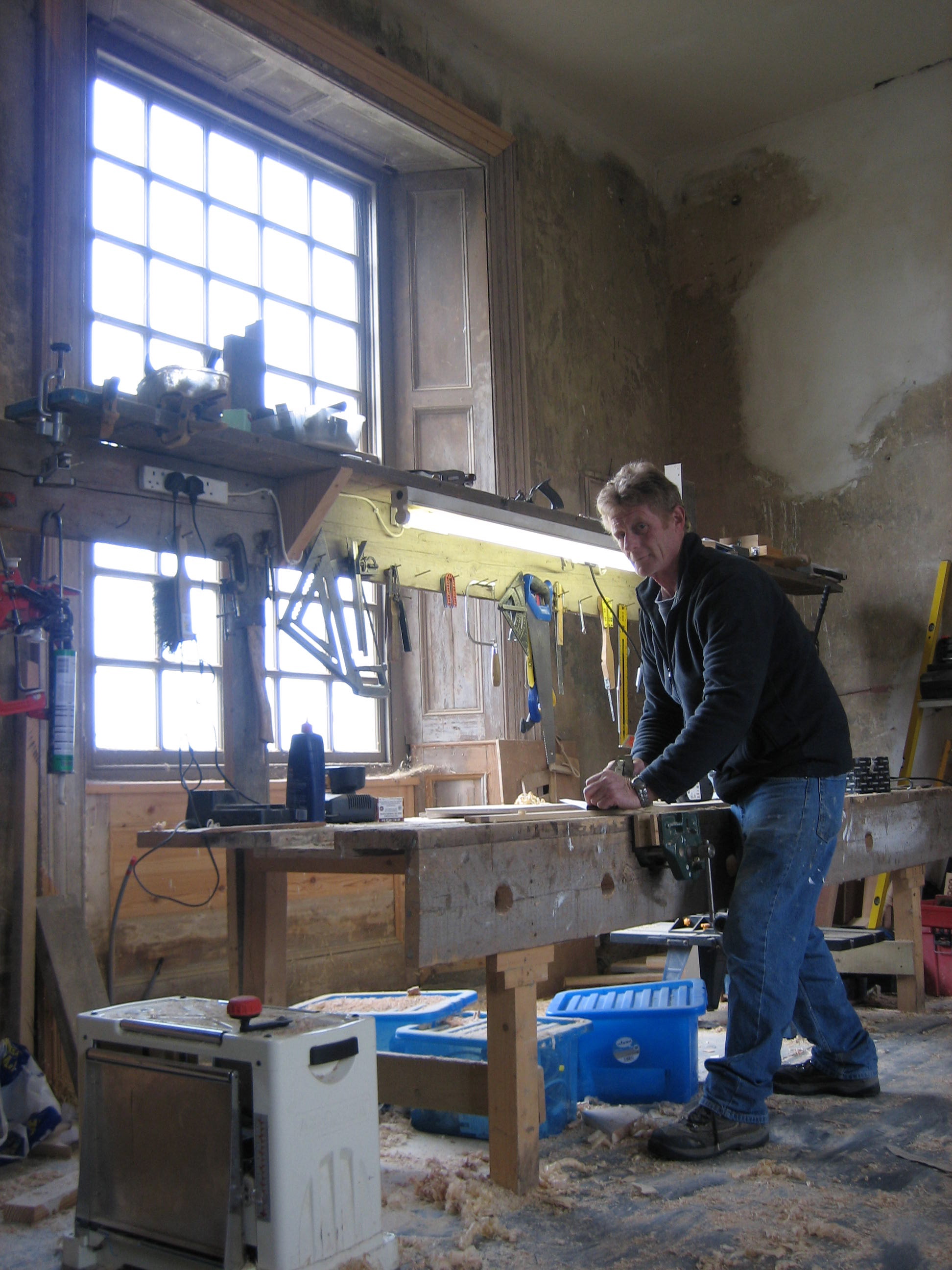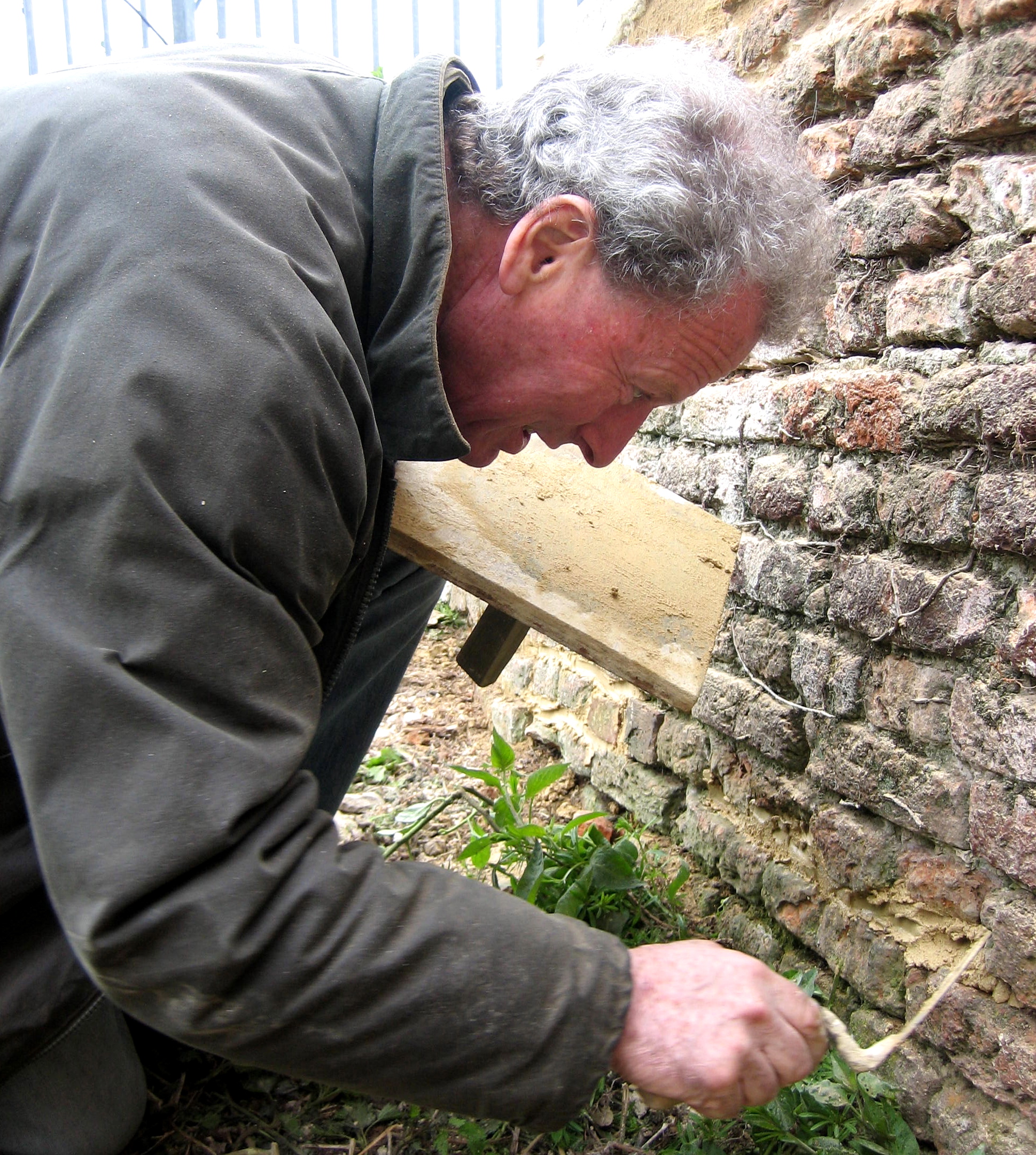From Spitalfields to the Isle of Sheppey
Standing here among the intricate chimneypots and crenellated turrets upon the roof of Shurland Hall on the Isle of Sheppey, there are expansive views across the Thames Estuary and the North Sea in one direction and over the Isle of Harty towards the Kentish Weald in the other. Caught in a sheltered dell beneath a gentle ridge, adjoining an old duck pond and surrounded by rolling fields, it is a favoured spot for a house, and I was delighted to spend an afternoon at Shurland, courtesy of the Spitalfields Historic Buildings Trust who have spent the last five years renovating this ancient edifice.
Standing on the roof, listening to the chorus of bird song, surrounded by trees coming into leaf, and observing the towering clouds that manifest the weather for the next few hours heading towards me over the ocean, I was aware of constants that would be familiar to any of the residents over the last thousand years of habitation. A Danish Prince Hoestan built his fort on this site in 893 and King Canute resided there in 1017, with the De Shurland family arriving at the time of the Norman Conquest. Hoestan, Canute and the De Shurlands would not have seen the fields and the distant caravan park I could see, but otherwise they would recognise the view, the background sounds and aroma of pollen on the Spring breeze. When Margaret de Shurland married Sir William Cheyne in the twelfth century, the Cheyne Family became the Lords of Shurland, reaching their zenith when Henry VIII came to visit with his new wife Anne Boleyn.
Henry VIII’s visit was the occasion of the building of the wings on either side of the gatehouse that stand to this day, now the great house that once existed behind the gatehouse is long gone, evidenced only by a fragmentary ruin of a door frame that the legendary monarch entered with his ill-fated wife in 1532. It was the expense of this visit that led to the decline of the house, accelerated by the stipulation of Elizabeth I that Shurland maintain a garrison to defend the valuable trade in wool and sheepskin, from which the island takes its name. Over successive centuries, the house was let to tenant farmers, becoming a barracks in the First World War and finally derelict for much of the last century, when rumours of a ghostly lady dressed in black silk were whispered in the nearby village of Eastchurch, and barn owls took up occupation in the turrets.
As you walk uphill to approach the mellow red brick and ragstone Tudor gatehouse with its raffish towers at Shurland, there is such an undeniable grandeur that you almost expect trumpets to emerge from the turret windows to sound a fanfare. Yet once you are inside the door, you find yourself in a domestic entrance that adjusts your expectations, offering a home for your umbrella and boots, and promising a quiet cup of tea by the fire, rather than the audience with the stroppy overweight monarch, which you had feared.
The gatehouse is only one room deep and behind it is the grassy courtyard that once led to the great house. The ground levels off here, and with the rear of the gatehouse facing South, there is a milder climate, sheltered from the wind at this side. My hosts, Tim Whittaker and Oliver Leigh-Wood of the Spitalfields Trust, left me to wander around while they set to work, Oliver patching up an old wall and Tim scattering grass-seed. I discovered that the gatehouse itself offers four large austere rooms, leading off a medieval staircase enclosed in a turret – two rooms on two floors on either side, all with windows at front and back, plain stone fireplaces and tall windows.
By contrast, the East wing has been reinstated with an eighteenth century staircase salvaged from Hatton Garden, connecting more domestic-scaled bedrooms, kitchen and bathroom. This reconception of the house permits the gatehouse rooms to be used for more formal living and the other end to become the domestic hub of the household. Now that the work reaches completion and the Hall is up for sale, these spaces cry out for life, because the house is ready to become a family home again.
The Spitalfields Trust have painstakingly put the whole place back together, stabilising the structure, adding new floors, windows and roof, and using their unique collective body of experience to make sure that all aspects of the work are in harmony with the building. Even the mortar, mixed with lime and crushed seashells matches the original, reminding you in the essence of the structure, that the name Shurland derives from “Shoreland”. Everything new that you can see has been done using materials that match the originals, letting the place speak for itself – because with so much history this is a building with plenty to say.
The flat roof is a great vantage point to observe the passage of distant traffic in the estuary, it creates an attractively slow-moving focus of attention. But once the future resident has become sated with this lazy amusement, they will cast their eyes down upon the large sheltered space at the rear of the house, enclosed by a perimeter wall. The potential for a garden is god-sent. Indeed, the name of Sissinghurst has been envoked as a precedent for what could be attempted to enfold the rich palimpsest of these walls with plants and flowers. So the future owner will need green fingers, as well as a healthy bank balance.
The completion of Shurland Hall is the culmination of the most ambitious project to date for the Trust, originally formed over thirty years ago to save the old houses in Spitalfields. In this instance, they have rescued a building with a venerable history that had been reduced to a mere shell and ensured its future as a dwelling for generations to come.
If you are interested to buy Shurland Hall contact spitalfieldstrust@hotmail.com
Looking through the arched doorway that Henry VIII and Anne Boleyn walked through in 1532.
John Howard, the carpenter who has reconstructed all the woodwork at Shurland Hall.
Oliver patching up an old garden wall.























I always love it when someone brings to attention a side of the Isle of Sheppey that is so at odds with what many of us associate with it. Like many East End families we had a caravan at Leysdown where we spent spring and summer weekends and the summer holidays (a procession of dads would drive down to Sheppey on Friday evenings after work). My Sheppey is a place of slot machines, bingo, working men’s clubs and cockling. In my memory there were endless summer days of riding my Chopper bike along gravel paths and up the cliffs (which turned out on a more recent visit to be a gentle slope). For East End parents like mine who had had no access to gardens it was a bit of a paradise. We had no idea that such splendours as Shurland Hall lurked nearby – but then I never knew that that ‘Fat Lady’ sculpture I climbed over as a kid in Stepney was a Henry Moore.
Have just come on your web page as a conversation on “Facebook” . I worked on Shurland Hall during the 80s clearing the site of trees etc .Didn’t know that it has been brought back to its former glory.Must say what a wonderfull job you”ve done .
I was delighted to find out about this enchanting buliding – Being aware of the magnificent Layer Marney and Little Leigh’s red brick Tudor Gatehouses (to say nothing of Hampton Court!) – I became curious to know if there were others, especially in the wider environs of London. I have visited Sheppey only to explore the London Clay Flora on the beaches – litle did I realise what tresure I had overlooked inland. Next summer I’ll be visiting!
Congratulations to all those involved over the years to ensure this ‘jewel’ was not lost – even though stulpid botanists like me overlooked it!
Although I’ve visited Shurland Hall on a number of occasions since Spitalfield Trust have been renovating the place I can honestly say it is always a thrill to see the work that has been done on this historical site. It really looks magnificent and I would like to congratulate Mr Oliver Leigh Wood, Brian, Dean, John – in fact the whole team for the gift they have given to the skyline of Sheppey. I am a volunteer at the Minster Gatehouse Museum and it’s always a delight to be able to show visitors the large painting by harold Batzer of Shurland Hall that hangs above one of the fireplaces in the Museum and tell the story of the Hall and its renovation.
Thanks again and good luck with all other projects that you undertake on Sheppey. Please keep up the good work, it can only be to our benefit.
Roger Betts
What a Magnificent restoration! I shall certainly visit on my next UK journey. Thanks to all those concerned.
What a grate job you have done with this place ive been on the island for 32 years went there when we lived in eastchurch
What im wrighting for is if we can have permission to hold a paranormal night there i run kent paranormal investigators we are based on the island and as you have a ghost ther would be nice to see if we get any thing there .
thanks dave lead investigator
This… I have just learned was owned by my grandad Mr Charles Love! Goodness I wish I had inherited it! It’s beautiful. My mum used to talk about a castle like building on her dads farm (kingsborough farm) where she grew up and she and her best friend used to play together. As my mum was an only child I do so wonder what happened to the land as i understand he owned three farms in all. My mum moved me and my sister to Cornwall but I cherish my memories of grandad in those days. I believe he died in 1986 when I was about 8 and so I have never been back to sheppey since. How I wish we had inherited the farm and now mum mum has passed away also I wonder if anyone knows more about Charles Love. Shurland Hall looks amazing! X
As a child I was brought up in Kings Cross,we lived in a three bedroom council flat with no balcony or garden. My parents had a chalet in Leysdown wich gave us access to the countryside and sea.I was able to learn to ride at a stable in Eastchurch and have continued to have horses in my life ever since but my earliest memory of being on a horse was at the age of seven,my first ride on a Dunn gelding called Chunkey in the grounds of Shearling Castle,there were several bridle paths that went through the land and I frequently rode there for around ten years from 1963. How amazing that you have restored the beautiful house I often had fantasies of living there as a child.There were always several flocks of geese that would attack and several times I was carted into the middle of the pond by a will full Shetland pony.
I think I shall make a vist .